Cool Jobs: Poop investigators
From dino droppings to gut microbes to square poop, you can learn a lot by studying feces
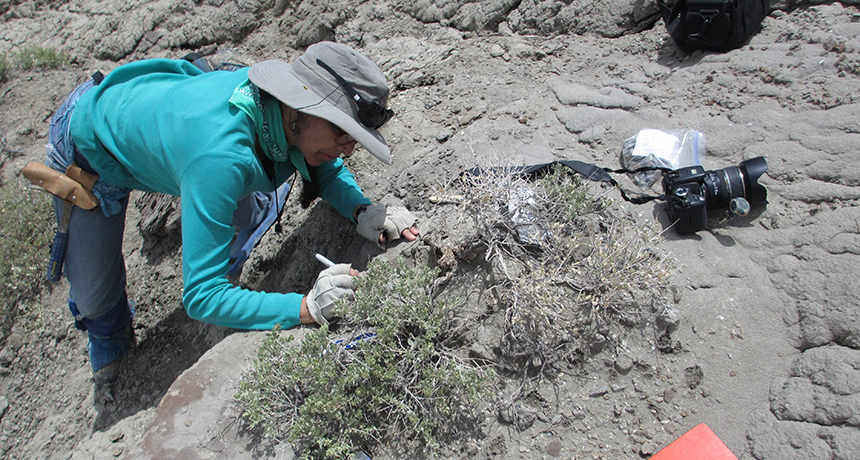
Karen Chin studies fossilized feces to learn what dinosaurs ate and how they interacted with their environment.
K. Chin
By Ilima Loomis
Study something in a test tube, and scientists say that the research was performed in vitro. That’s Latin meaning “in glass.” Study it in a living body, and it’s in vivo (“in a living thing”). But what if your research has you poking around in poop? Scientists haven’t had a word for that — until recently.
Introducing in fimo. This new scientific term describes experiments done on feces. The term, based on the Latin word fimus, meaning “dung,” was introduced this past April in the journal Gastroenterology (GAS-troh-en-tur-OL-oh-gee).
For most of us, poop is gross stuff. We deal with it only grudgingly. But for some scientists, it can be a gold mine of useful data. Feces can provide clues to someone’s health, an animal’s diet or the environment in which an organism lives. That’s what drove these three scientists to in fimo research. They use it to learn about the bacteria in our gut, dinosaur diets and just how poop gets its variety of shapes.
Investigating square scat

Patricia Yang studies fluid mechanics — the science of moving fluids — in animals at the Georgia Institute of Technology in Atlanta. Coming from a family of scientists, “I knew what it was like to have a lab coat and work in a clean lab,” she says. But she was looking for a different way to do science. The answer came on a trip to the zoo. She accompanied her advisor, who was studying how animals urinate. “I thought, ‘This is a fluid mechanics problem that I can solve,’ At the same time,” she notes, “I saw animals pooping and thought there were probably some similarities there, as well.”
Yang has since studied many info-packed bodily substances, including urine, blood and, of course, feces. And after spending a lot of time with poop, she thought she knew it well. It comes in two main shapes. People, dogs and cats are in the group that poop cylinders. Deer and bunnies are among those whose droppings resemble pellets.
But, it turns out, there’s a third shape: square.
“I gave a talk at a conference, and a professor told me, ‘You missed one. There’s a square poop. Wombat poop is square.’” she recalls. That one was new to her.
Wombats are squat marsupials from Australia. They look a bit like small bears. Yang was curious — and suspicious. Square poop? It didn’t make sense. “It’s not right for body design,” she says. “I didn’t think a human or animal could really make a square.” In fact, she observes, square shapes are extremely rare in nature. Other than the bones of some sea horses, Yang couldn’t think of many examples of naturally occurring squares. She says, “We decided we had to see it before we claim that it’s true.”
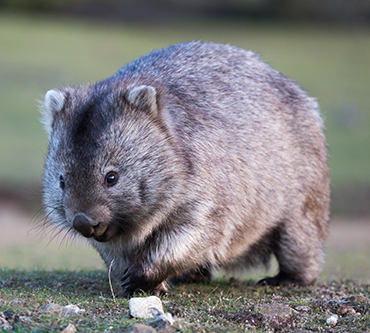
Yang found pictures of wombat droppings online. Still, she wasn’t convinced. Someone could have shaped the droppings into cubes after the fact. So she contacted zoos with wombats and asked for samples of poop. They refused.
Finally, Yang got in touch with Scott Carver. He’s a wildlife ecologist at the University of Tasmania in Hobart, Australia. And because he was interested in the same topic, he was happy to help.
He confirmed firsthand that out of four wombat species, Vombatus ursinus — also known as the common or bare-nosed wombat — indeed makes square feces. Then, to help Yang figure how they do it, he sent her the intestines of two such wombats that had died after being hit by cars.
Opening up the intestines, Yang was excited by what she found.
“There are squares inside,” she notes, “even before the feces come out.” The wombat’s anus doesn’t produce the square shape, she realized. “It’s happening in their gut.”
On to ballooning research
Yang also noticed that, while the intestine was 6 meters (19 feet) long, only the last 1.5 meters (5 feet) had the unusually shaped feces. Before that, the wastes were soft and unformed. “In the final length, they are all square, with the same dimensions,” she says. Well, at 2 by 2 by 4 centimeters (0.8 by 0.8 by 1.6 inches), they’re actually rectangles.
Yang and her colleagues thought about how their squared shape might form. An animal’s intestine squeezes waste into solid pieces and then pushes it through the body by contracting. What if the wombat intestine was not contracting uniformly?
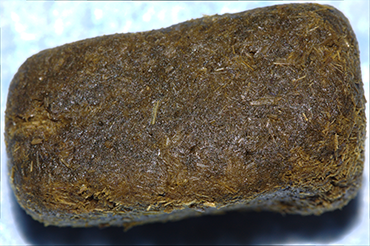
The researchers got a long balloon, the type used to make balloon animals. They made tick marks along the now-empty intestine and then inflated the balloon inside it. The marks allowed the researchers to see how different parts of the intestine moved as it expanded. These marks don’t expand evenly, Yang notes.
That revealed the tissue of the intestine was not uniform. Some areas were soft. Others were stiff. So when the intestine contracted, it did not do so evenly. It pushed down harder in some areas than others. This created edges and angles. The result: rectangles with slightly rounded edges.
“This is an extreme case of how the property of intestines changes the shape of feces,” Yang concludes.
Her discovery is more than just an interesting factoid. Says Yang, it could help shape items in a poop-free venue: manufacturing. “Right now, we only have two ways of making cubes: We either mold them with solid molds, or we cut them,” she says. These wombat data point to “a third way of making cubes.”
Digging into dino droppings
Ancient poop gives a different type of information. Most manure breaks down and becomes compost — a good thing, since a poop-covered planet would be disgusting. But under special conditions, feces may get preserved as fossils for millions of years. They also get a special name: coprolites. And to Karen Chin, they’re a great tool for studying how dinosaurs ate and interacted with their environment.
Chin works at the University of Colorado at Boulder. As a paleoecologist, she studies the ancient environment. Chin first became interested in feces while working as a seasonal interpreter at national parks such as Yellowstone and Glacier. When she led people on hikes, the groups rarely saw animals. They instead encountered scat. That poop offers a window into “what’s happening in the natural world when you’re not there,” she says.
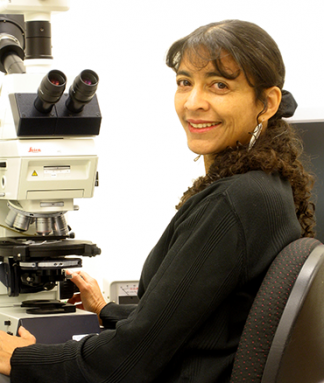
Later, as a paleontologist, one of her early jobs was writing descriptions for a museum’s dinosaur collection. When she was asked to write about its dinosaur coprolites, she got hooked. Chin wanted to know how soft material like feces might become fossilized. She was also curious about what that poop could tell her about what dinosaurs eat and the environment in which they lived.
Unlike deer pellets or bear scat, “dinosaur coprolites are very rare,” she notes. To be preserved, feces had to land in a place where they would be quickly buried. One sample she’s studied, for instance, came from a tidal flat. “The dinosaur walked across and defecated, then the tide rose and helped bury the feces,” she explains.
Smaller coprolites are a bit easier to find. “They’re sausage-shaped and look like dog feces,” she says. But bigger dinosaur poops can be hard to identify. “If you go to the zoo — which I have — and watch elephants defecate, [the poop balls] drop from a considerable height,” she says. “They can be deformed when they fall, or trampled.”
Chin studies these larger coprolites from dinosaurs. To make sure they’re not just “ugly misshapen rocks,” she checks what chemicals they’re made from. She also looks for pieces of chopped-up organic matter, such as leaves, shell or bone. If she sees signs of tiny tunnels or burrowing by dung beetles or other invertebrates, that’s even more evidence that she’s got genuine dinosaur poop on her hands.
If she has permission from the coprolite’s owner (usually a museum), she can cut a thin section from the sample and place it under a microscope. She’ll be looking for bits of what the dinosaur ate, such as cells from animal muscle or bone, plant tissues or pieces of fungi.
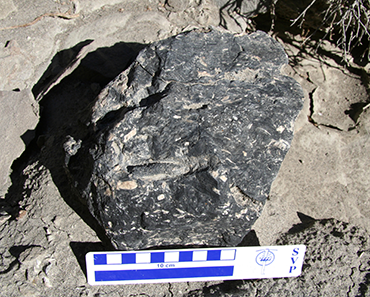
In one recent study, Chin examined coprolites that probably came from one or more types of hadrosaurs. These duck-billed dinos lived some 75 million years ago in what is now southern Utah. Their coprolites contained evidence that the dinosaurs had been eating rotting wood. Even more surprising, mixed in with the wood was crunched up pieces of crustacean. That was odd since these dinosaurs were thought to be strictly plant-eaters.
The crustaceans were big enough that the dinosaurs could have spit them out if they didn’t want to eat them. What’s more, the crustaceans were found in seven out of every 10 coprolites she studied. This led Chin to think this carnivorous snack was no accident. But this isn’t necessarily weird behavior for plant-eaters. Some modern herbivorous birds eat insects or other animals to increase their protein intake when they are getting ready to lay eggs. Maybe these dinos — the ancestors of birds — were doing the same thing.
“Whether or not the dinosaurs actually hunted the crustaceans, we don’t know. But if they were feeding on rotting wood and happened to ingest crustaceans, I think they ate them readily,” she says. “That changes our traditional view of these lumbering herbivorous dinosaurs.” They weren’t just standing there feeding on leaves.
Developing stool standards
Poop can give a different view of much smaller critters, too. Over the past 10 years, scientists have learned that the community of microbes living in the gut is hugely important to human health. This collection of microbes is known as our microbiome. Scientists can learn about the gut microbiome by studying what comes out of the gut: poop. Now researchers and drug companies are racing to learn more about how this microbiome works, how it can be used to diagnose diseases and how it might lead to new treatments.
But there’s a catch. There is no standard, agreed-upon way to analyze the genetics of the human microbiome. So every lab uses slightly different tools and methods to extract and analyze the DNA from a bacterial sample. No surprise, then, that different studies get different results.
Scott Jackson wants to change that. As a microbial genomicist (Juh-NOAM-ih-sizt), he studies the genes of microbes. He works at the National Institute of Standards and Technology in Gaithersburg, Md. He leads its Complex Microbial Systems group.
Figuring out the DNA of a member of a microbiome is far harder than sequencing the DNA of a single animal or plant. (Sequencing involves figuring out the order of nucleotides — chemicals that make of the rungs in the ladder-like structure — in an organism’s DNA.)
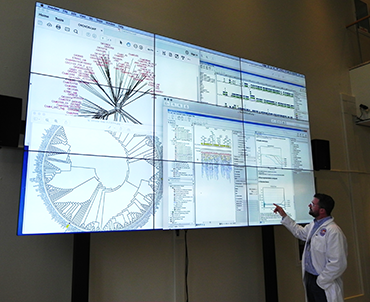
A scientist looking at the DNA of a single organism often already knows who or what it is. When delving into a bit of poop or other microbiome sample, scientists will be starting with something that contains hundreds of different species of microbes. What’s more, half of those microbes might still be unknown to science. Researchers have to sort out the DNA to see which species are in the sample, and roughly how many of each are present.
Since each lab can come up with slightly different results as they do these analyses, Jackson’s group came up with a plan to compare results from a big group of labs. That might prove helpful for future research in this field.
The researchers started by collecting stool from five generous people. Each donor’s feces were blended to homogenize the samples, or make them uniformly mixed. Researchers from another group, the BioCollective, prepared the samples using a household Ninja blender. The resulting product had “the consistency of a smoothie,” Jackson says.
That poop smoothie was then divided up into 700 tubes. Each held about one milliliter (one-fifth of a teaspoon) of poop. The tubes were then divvied up into 700 kits, with each kit containing one tube from each of the five people. “That’s 3,500 tubes of poop,” Jackson notes.
Jackson’s team recruited labs around the world to participate in the tests. Each was asked to sequence the DNA from the microbes in a kit, then upload their results to a website. That would let Jackson’s group compare the findings from lab to lab.
His group has sent out about 100 kits since they launched the project last year. “We have 700 kits, and we’re not going to stop until that 700th kit is shipped,” he says. “What we want to see is how much variability you get when you measure one sample using 100 different [methods].”
Jackson has some theories about what the study will reveal. For one, he expects that not all 700 labs will get the same results.
Besides getting more data how widely the labs’ findings differ, Jackson hopes the project will help identify the tools and methods that work the best. And that’s info that can help guide the next generation of poop scientists.
To most of us, feces are just smelly wastes. But a select group of scientists is finding new meaning in “waste not, want not.”







